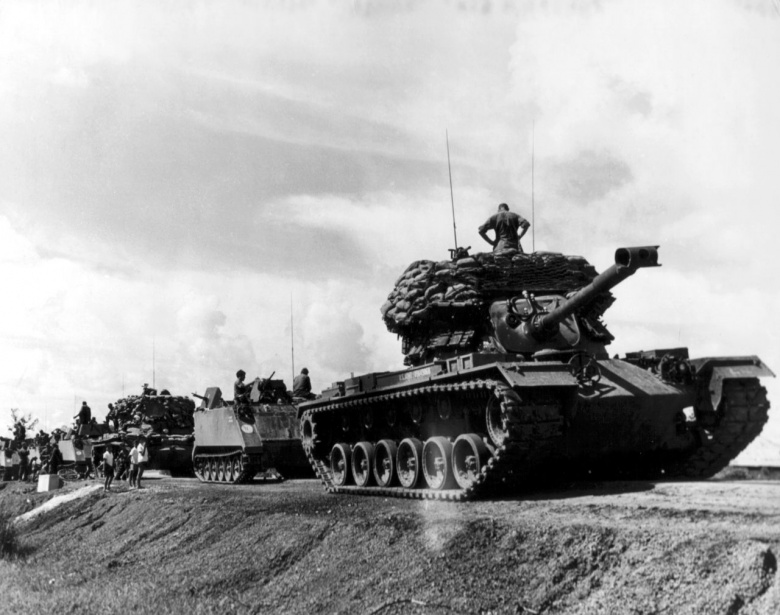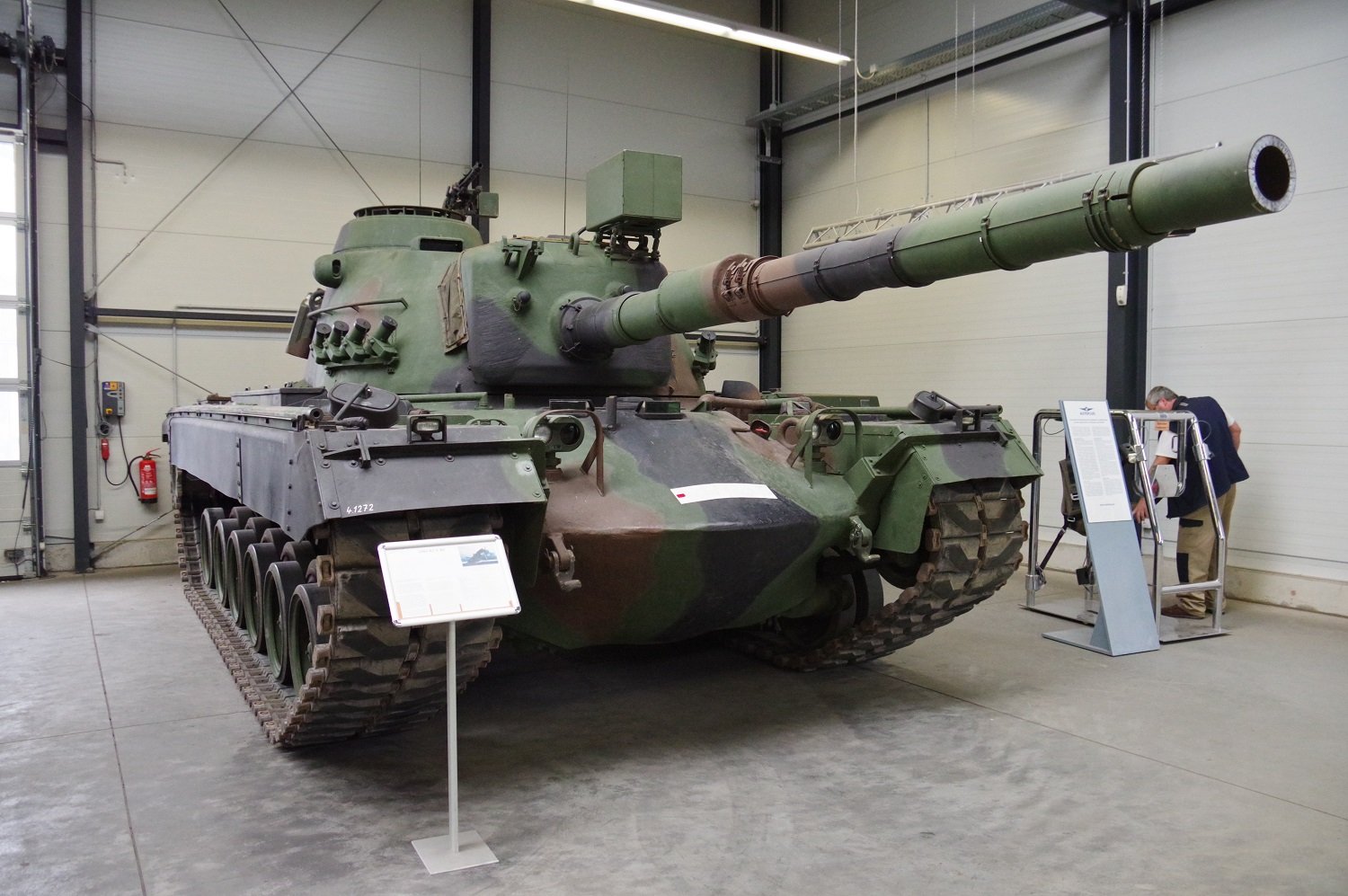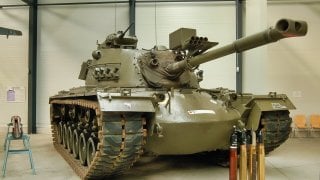M48 Patton: The Tank the U.S. Army and Elvis Loved
The M48 Patton was indeed America's first generation of tanks to fit the MBT concept, but actually, was the third tank to bear the famous general's name, following a direct linear alphanumeric sequence from the M46 and M47 Pattons.
M48 Tank: Carrying On the Patton Legacy: The M48 was indeed America's first generation of tanks to fit the MBT concept, but actually, was the third tank to bear the famous general's name, following a direct linear alphanumeric sequence from the M46 and M47 Pattons.
The M46 in particular was built as a replacement for the WWII-vintage M26 Pershing and M4 Sherman, whilst the M47 – as noted by my colleague Peter Suciu, "was largely seen as a stopgap – a marriage of the T42 tank prototype and M46 chassis.”
The development of the M48 variant in particular was given an additional sense of urgency after the painful lessons of the Korean War.
The design and research and development were conducted by Chrysler Defense Engineering, beginning in 1950. However, in a fine example of the "Big 3" Stateside automakers putting aside their salesmanship rivalries for the sake of a patriotic common cause, actual production, which began in 1952, was carried out by Chrysler, Ford Motor Company, and the Fisher Body Division of General Motors … along with the American Locomotive Company (AKA "Alco") for good measure. This factory foursome ended up with a total of 12,000 M48 tanks over a nine-year span.
The tank weighed 49.6 tons, with a length of 30 feet 6 inches (9.3 meters), a height of 10 feet 2 inches (3.1 metes), and a width of 12 feet (3.65 meters). Carrying a four-man crew – commander, gunner, loader, and driver – this third edition of the Patton could traverse the battlefield at a maximum speed of 30 mph (48kph).
As for armament, to quote Peter Suciu again, "The M48, which was equipped with a 90mm gun, had been designed for combat in Europe against Soviet tanks of the early Cold War era and it proved more than up to the task. It has been reported that a good tank crew in the M48 could put the first round on target ninety percent of the time, even if it required excellent teamwork and communication."
Secondary armament initially consisted of Browning .50 caliber M2 "Ma Deuce," machine gun but was replaced on later variants by the .30 caliber Model 1919. The final variant of the Patton, the M48A5, wielded a 105mm main gun and the M219 coaxial machine gun in 7.62mm NATO.
Combat Proven, But Also Problematic
Although built by and for Americans for the purpose of fighting Soviet tanks, the M48 actually got its first major tank vs. tank combat test, ironically enough, at the hands of a non-NATO nation, and against the tanks built by a NATO ally no less. More specifically, the Patton tank was the mainstay for the Pakistani Army in their fight against India's British-made Centurion tanks during the 1965 Indo-Pakistani War.
During this South Asian subcontinental conflict, on the one hand, the Patton tank performed reasonably well against Indian armor, and the tank was well-regarded by both sides. However, on the other hand, the poorly-shaped armor of the M48, combined with its relative thinness on the sides – a mere 76mm in thickness – left the American-designed tanks distressingly vulnerable to the Centurions' 20-pounder (84mm) guns.
As far as combat use of the Patton by American troops was concerned, the M48 was the most heavily used tank by the U.S. – and her Army of the Republic of Vietnam (ARVN) allies – during the Vietnam War, with over 600 being deployed to the Southeast Asian conflict.
The majority of the M48's usage herein was in the infantry support role, as tank vs. tank engagements during this war were relatively few, not even close to matching the frequency or volume of such battles in WWII, the Indo-Pakistani Wars of 1965 and 1971 alike, or the various Middle Eastern wars.
In the Battle of Ben Het in March 1969, which was the only tank battle between the U.S. and the North Vietnamese Army (NVA), the tally was one Patton tank damaged with two crew members KIA vs. two PT-76 amphibious tanks and one BTR-50 armored personnel carrier (APC) destroyed.

"Tank Ya, Tank Ya Vera Much…"
Since the Cold War luckily never blossomed into WWIII, American M48 crews in Europe never got to test their mettle against their Soviet adversaries. Nonetheless, the Patton tank earned a claim to fame from a pop culture standpoint, as the tank crewed by none other than The King of Rock 'n' Roll, Elvis Aaron Presley, during his brief but momentous Army career, first with the 2nd Armored Division ("Hell on Wheels") at Fort Hood, Texas, followed by the 3rd Armored Division in Friedburg, Germany. Regarding Elvis's M48 training at Ft. Hood, in particular, TexasMonthly columnist Michael Hall provides us this backstory, which also ties in nicely with the tank's namesake:
"During the long days at Fort Hood, Elvis was in the middle of advanced individual training, learning to be a tanker. This was Patton’s division, and they trained on the sixty-ton M48 Patton Tank. (Elvis was gung ho about the general. When one of his lieutenants in Germany quoted to him Patton’s famous line, 'I don’t want to die for my country; I want the other son of a bitch to die for his country,' Elvis replied, 'Damn right!') The soldiers cleaned tanks and fired them out on the range; they took the engines out and put them back, changed the tracks, and ran formations. Elvis placed third in tank gunnery. He liked tanks—perhaps they reminded him of his beloved Cadillacs—and he liked being in charge. Dorton Matthews remembers how once after he put Elvis in command of a tank, the other recruits begged him to put someone else in charge. 'He’s working us to death,' they complained."

Those latter three sentences of that passage probably help explain at least in part why The King managed to get promoted to Sergeant/E-5 before his two-year service stint was over. Not bad for a draftee who had no intention of being an Army "lifer."
About the Author
Christian D. Orr is a former Air Force officer, Federal law enforcement officer, and private military contractor (with assignments worked in Iraq, the United Arab Emirates, Kosovo, Japan, Germany, and the Pentagon). Chris holds a B.A. in International Relations from the University of Southern California (USC) and an M.A. in Intelligence Studies (concentration in Terrorism Studies) from American Military University (AMU). He has also been published in The Daily Torch and The Journal of Intelligence and Cyber Security. Last but not least, he is a Companion of the Order of the Naval Order of the United States (NOUS).


